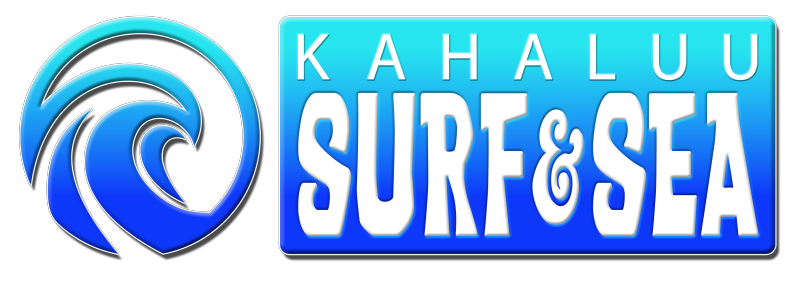Top 5 Pre-Surf Stretches
Improve The Way You Move: 5 Pre-Surf Stretches
This guest blog is written by Brett Carey, DPT, Clinic Director and Physical Therapist at Therapydia Kona. Brett Carey was a former pro surfer and tries to go surfing every morning before work.
Being out on the water puts a lot of force on your joints, from your ankles all the way up to your shoulders. While surfing, your muscles have to move in certain ways in order for you to keep your form on the board. Getting your blood flowing to the right places before a surf needs to involve dynamic stretches throughout your body. Dynamic stretches are controlled repetitive movements that give your muscles an active stretch. You’ll be engaging and stretching out the muscles you’ll be working the most when you surf—the shoulders, torso, gluteal muscles around the hips, and even the ankles. Having better agility, endurance, and power while surfing can come down to taking a few minutes to warm yourself up before you hit the water. With some quick stretches, you’ll be opening up range of motion and flexibility in your joints and muscles before you surf. This goes a long way in preventing strains and sprains, common injuries that surfer’s are at risk for if they aren’t flexible in the right places.
1. Arm Circles
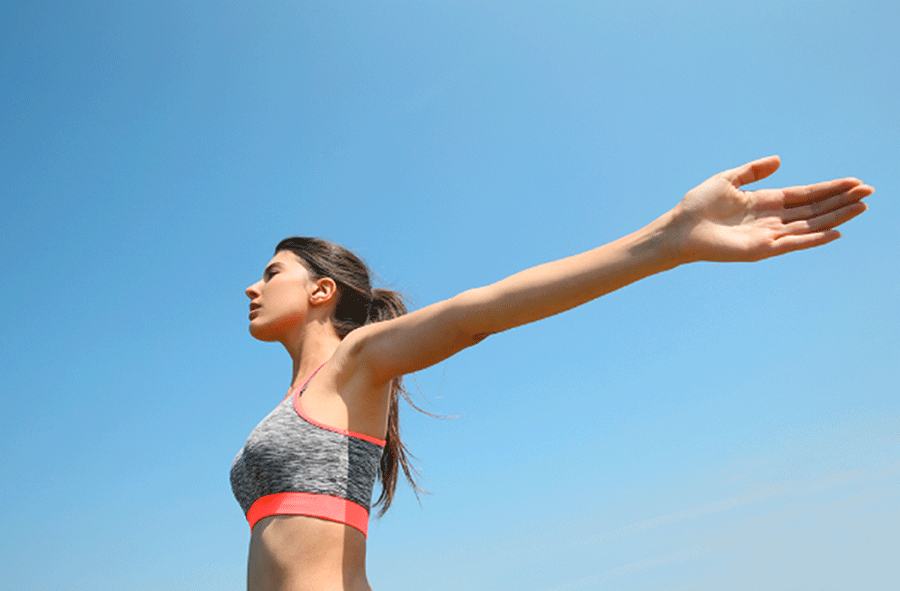 Surfing involves a lot of rotation through the shoulder and torso to flow between turns. Certain muscles around the front of your shoulder are almost constantly being pulled forward when surfing. The key with arm circles is to get some activation in the muscles all around your shoulder girdle.
Surfing involves a lot of rotation through the shoulder and torso to flow between turns. Certain muscles around the front of your shoulder are almost constantly being pulled forward when surfing. The key with arm circles is to get some activation in the muscles all around your shoulder girdle.
•Stand straight with your legs hip-width apart and spread your arms wide
•Begin by making small circles, then larger circles with your hands
•Reverse the direction of your circles in between repetitions
•Start out with 5 smaller and larger rotations in each direction
•Make your way up to 10 as your shoulder muscles get used to the movement
When paddling, you’re at the mercy of the waves, so you want to make certain that your shoulder muscles are as mobile as possible.
2. Standing Trunk Rotations
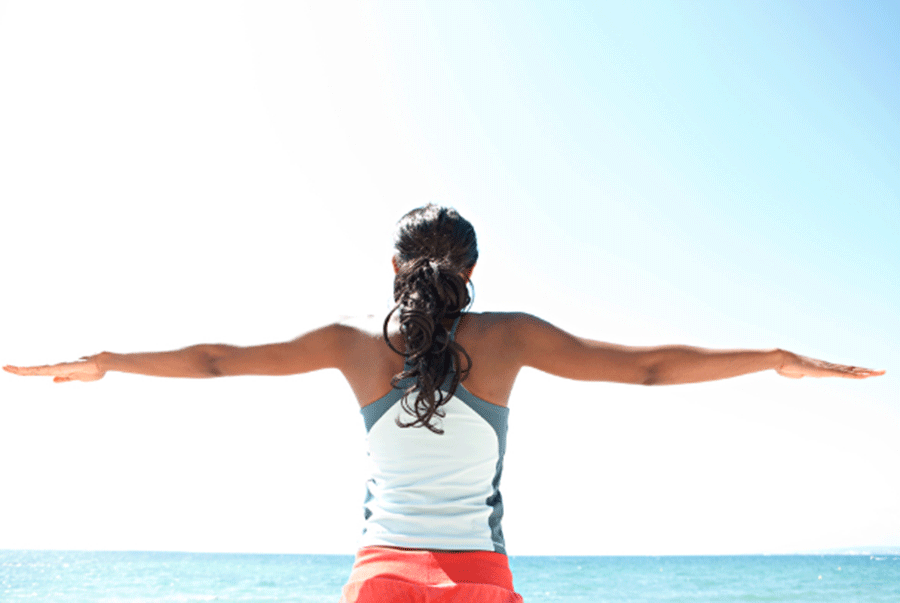 Cutting through waves and forcing your board to make those turns involves a lot of activation from the muscles in your core. Trunk flexibility is vital to make sure you’re not putting too much pressure on your lower limbs.
Cutting through waves and forcing your board to make those turns involves a lot of activation from the muscles in your core. Trunk flexibility is vital to make sure you’re not putting too much pressure on your lower limbs.
•Step your feet out a little bit wider than hip length
•Keep your knees slightly bent, spread your arms wide to either side
•In one motion, rotate over to one side through your torso without moving your feet
•Keep your arms straight and parallel to the ground
•You can let the foot opposite to your rotation direction come up a bit for more of a stretch
•Return back to the center with your arms out
•Rotate to the opposite direction
•Complete the whole motion rotating from one side to the other for 10 to 12 repetitions
Beginning to stretch the muscles around your trunk before surfing will prepare you for sharp movements in the water.
3. Side-To-Side Lunges
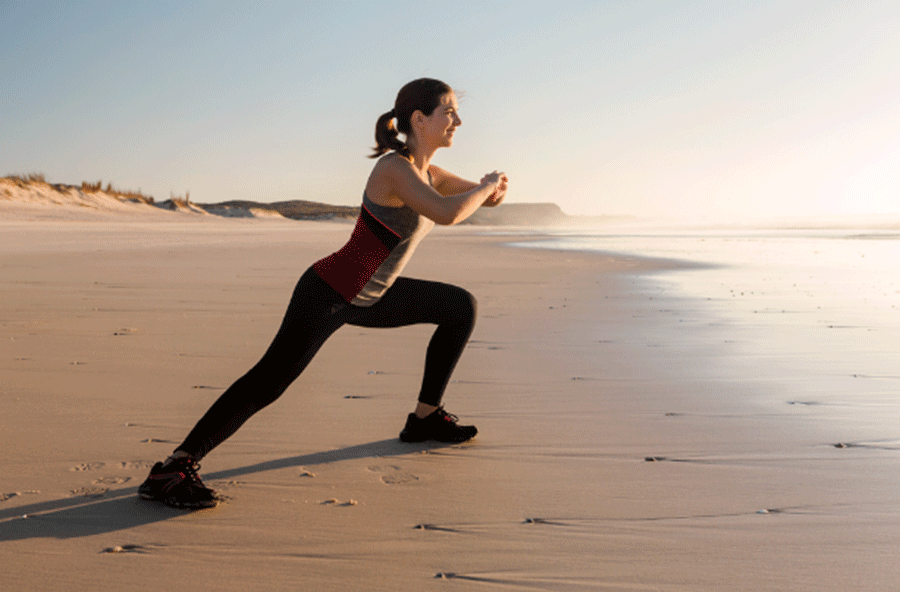 The movements in side-to-side lunges are great stretches for the lower body and the majority of muscles in the hip area. Surfing creates tight hip flexors because straddling the board keeps those muscles contracted for long periods of time. Having tight hips can also restrict how well you rotate when you’re turning on the board.
The movements in side-to-side lunges are great stretches for the lower body and the majority of muscles in the hip area. Surfing creates tight hip flexors because straddling the board keeps those muscles contracted for long periods of time. Having tight hips can also restrict how well you rotate when you’re turning on the board.
•Stand up straight and place your weight on your heels before beginning
•Engage your core to keep your spine stabilized as you step out to the right
•Keep your left leg straight with the foot firmly planted on the ground
•Bend at the hips as you extend your left knee while driving your weight to the right
•Flex your right knee as you slowly fall into the side lunge
•Continue to extend over to the right
•Stop extending once your shin is vertical to the floor and your knee is aligned with your foot
•Push off of your right foot and return back to a standing position
•Repeat the movement on your left side
•Alternate sides for 10 repetitions
Focusing on stretching the muscles around your hips will result in more mobility when you’re surfing, especially with those really tight turns.
4. Lunge With Rotation
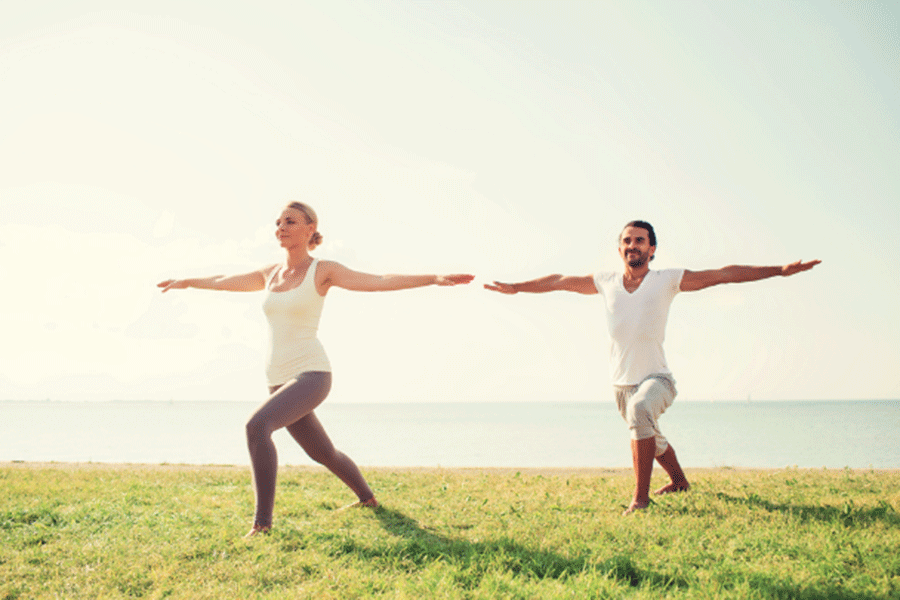 This stretch brings together aspects of the three previous stretches with some balance training as well. Adding a trunk rotation movement to a typical forward lunge will stretch the hip flexors, activate your core, and strengthen the muscles of your ankle. Your ankle muscles will have to stay stable as you move through this type of lunge. Getting low in your surfing stance requires a lot of muscle balance from your ankles and knees. With this stretch, you’ll be training and activating the receptors around your ankle that aid your body’s sense of balance.
This stretch brings together aspects of the three previous stretches with some balance training as well. Adding a trunk rotation movement to a typical forward lunge will stretch the hip flexors, activate your core, and strengthen the muscles of your ankle. Your ankle muscles will have to stay stable as you move through this type of lunge. Getting low in your surfing stance requires a lot of muscle balance from your ankles and knees. With this stretch, you’ll be training and activating the receptors around your ankle that aid your body’s sense of balance.
•Begin with your feet hip width distance apart
•Take a strides length forward
•Slowly fall into a lunge as you bend your knees to a 90 degree angle
•Rotate your torso towards the front leg as you stay in your lunge position
•Bring yourself out of the twist and rotate to the other side
•Slowly step back and stand back up
•Repeat the lunge and stretch about 20 times, with 10 rotations on each side
5. Ankle Rolls
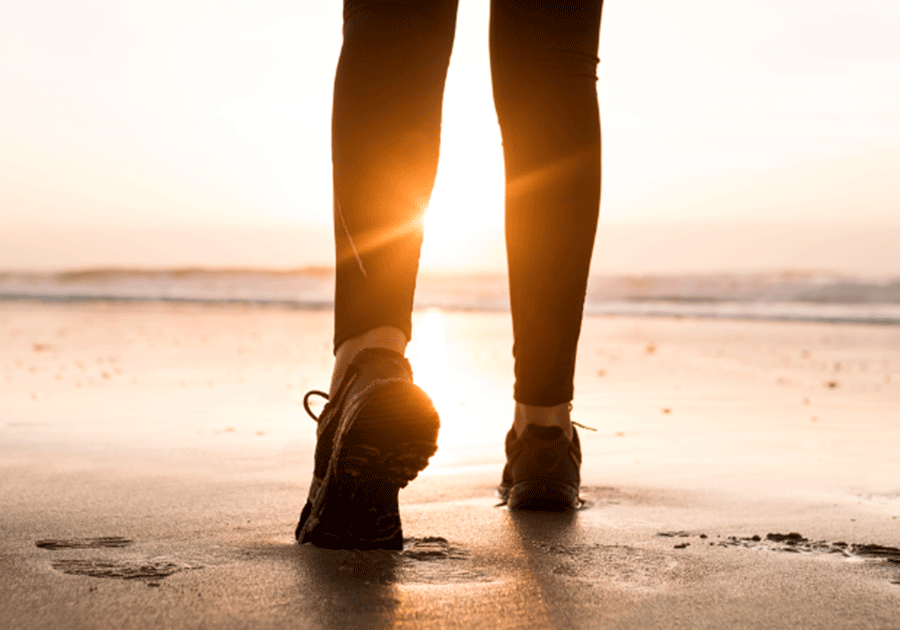 As simple as these sound, they go a long way for preparing your ankles for the sheer force they handle while surfing. Keeping the ankle joint and the muscles around it flexible is beneficial for your entire lower body. If you don’t have enough mobility in your ankle, your knee will compensate for it by moving incorrectly and taking on extra pressure when surfing. By increasing your ankle’s range of motion, you’ll ensure that your foot and knee will be at lower risk for injury.
As simple as these sound, they go a long way for preparing your ankles for the sheer force they handle while surfing. Keeping the ankle joint and the muscles around it flexible is beneficial for your entire lower body. If you don’t have enough mobility in your ankle, your knee will compensate for it by moving incorrectly and taking on extra pressure when surfing. By increasing your ankle’s range of motion, you’ll ensure that your foot and knee will be at lower risk for injury.
•Start off by standing up straight in a comfortable position
•Raise one foot straight out in front of you, a few inches from the ground
•Gently roll the ankle, first clockwise for 10 rotations
•Then counterclockwise for 10 rotations
•Repeat with the other leg
This way, you’ll be preparing your ankles to be mobile while you get low and stay balanced on the board while also preventing any strain to your lower limbs.
Get Surfing
Your body needs to quickly and efficiently use every major muscle group and joint while surfing. Engaging the right muscles before you surf will increase your body’s ability to paddle harder, pop-up faster, and direct your board through the water with more power. By stretching different parts of your body before you surf, it’ll help your different muscle systems smoothly coordinate together. If one joint isn’t as mobile, you’ll be putting more pressure on another joint. It’s key to consider what these stretches are doing for your whole body as a unit as you surf. Stretches like these also do their part in mentally preparing you for a surf by helping you get in the zone. Having those areas actively warmed-up will not only allow you to surf with more power, but also surf pain free.




